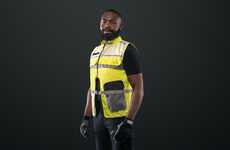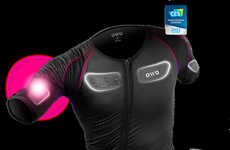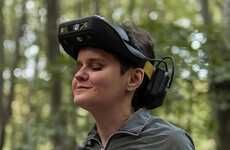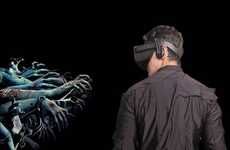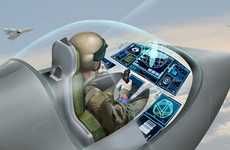
The Eyeronman Haptic Vest Warns Wearers of Potentially Dangerous Objects
Alyson Wyers — July 3, 2014 — Tech
References: tactilenavigationtools & springwise
A new sort of wearable technology consists of a haptic vest that is packed with sensors to guide wearers through low-visibility environments. The Eyeronman vest from Tactile Navigation Tools can detect 360 degrees around the wearer, sensing obstacles and giving warning through tactile feedback.
This haptic vest makes use of a few different technologies, including an ultrasound device that works similarly to bats to figure out how far away objects are. Infrared technology determines the temperature of these objects, while a LiDAR laser also detects distance. A corresponding vibrating pad alerts wearers to where the danger is located.
This haptic vest would not only be helpful to the visually impaired, but also to emergency responders and military personnel dangerous situations.
This haptic vest makes use of a few different technologies, including an ultrasound device that works similarly to bats to figure out how far away objects are. Infrared technology determines the temperature of these objects, while a LiDAR laser also detects distance. A corresponding vibrating pad alerts wearers to where the danger is located.
This haptic vest would not only be helpful to the visually impaired, but also to emergency responders and military personnel dangerous situations.
Trend Themes
1. Obstacle-detecting Wearable Technology - The Eyeronman Haptic Vest showcases how sensors and haptic feedback can create a new way of detecting obstacles and potential dangers.
2. Multimodal Sensing - The vest's use of ultrasound, infrared technology, and LiDAR laser demonstrate the potential for combining multiple methods of sensing in wearable tech.
3. Assistive Technologies - The Eyeronman Haptic Vest indicates the growing need for more assistive technologies like haptic feedback for the visually impaired, emergency responders, and military personnel.
Industry Implications
1. Wearable Technology - Companies producing wearable technologies could use similar sensor and haptic feedback technology in their products to detect and alert wearers to potential dangers.
2. Assistive Technology - The haptic vest demonstrates how assistive technologies can improve the lives of individuals with disabilities and provide potentially life-saving assistance in dangerous situations.
3. Defense and Emergency Services - Military personnel and emergency responders could benefit from the development and integration of this type of haptic technology into their gear, potentially saving lives in dangerous situations.
3.1
Score
Popularity
Activity
Freshness


